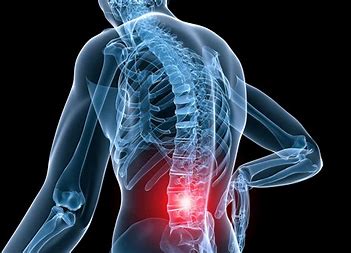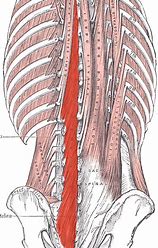Lower back pain is an extremely common condition in Australia. Research from the Australian Bureau of Statistics (ABS), estimate that 70-90% of people will suffer with back pain in some form during their lives. Therefore lower back problems contribute to a significant burden on the healthcare system.
Whilst the cause of lower back pain can be varied, one thing that has been shown to be strongly associated with lower back pain is weakness in a deep layer of our lumbar spine known as multifidus.

What is Multifidus
The multifidus is a muscle that runs from the back of our pelvis all the way up to the base of our skull. It attaches to each vertebra and sits just superficial to the spine itself, which puts it in a good position to provide stability and control to our entire spine. Multifidus plays multiple roles, including:
- Producing movement (extension when activated on both sides, side bending to the same side, rotation to the opposite side)
- Proprioceptive feedback and input, due to a high density of muscle spindles
- Fine control of the neutral zone – a region of intervertebral movement around the neutral posture where little resistance is offered by the passive structures of the spinal column
- Stiffness and stability of the vertebral column – enables each vertebra to work more effectively and reduces degeneration of the joint structures caused by friction from normal joint activity.

How does Multifidus affect Lower Back Pain?
Multifidus can become weakened or reduce in size due to a number of reasons including sedentary lifestyles and pre-existing conditions. As a result, multifidus becomes dysfunctional due to pain-related inhibition where the brain shuts down the muscles and prevents them from working effectively. When this happens, muscle tissue gets replaced by fatty deposits and this can lead to persistent dysfunction. An MRI can provide further information on the extent of deconditioning, weakening and fatty deposits.
Deconditioning of the multifidus leads to multiple issues with the lower back and core including:
- Instability of the spine
- Poor posture
- Overcompensation of secondary stabilisers
- Abnormal biomechanics
How can physiotherapy help?
Physiotherapy can help by providing a thorough assessment of your condition and determine the extent to which your multifidus is contributing to your lower back pain. We can do this by assessing your strength, balance, proprioception and motor control. Exercises can then restore normal muscle size and strength by concentrating on lower back strength, proprioception and from there improve core stability and coordination.
Exercises can be supplemented by manual therapy such as soft tissue release and dry needling. Soft tissue release will help ease local muscle tension, spasms and associated pain. With reduced pain follows reduced inhibition, which allows for gradual strengthening and restoration of fine control and core stability.
Dry needling can also assist with multifidus rehabilitation. Trigger points in multifidus decrease the efficiency of transversus abdominis (another deep core muscle on the other side which contributes to overall stability) due to decreased reciprocal inhibition (where activation of one muscle forces relaxation of the muscle on the opposite side). Needling of multifidus trigger points can increase the thickness of transversus abdominis during contraction, which can help treat lower back pain and facilitate normal core function.
Further reading:
https://www.physio-pedia.com/Lumbar_Anatomy
https://www.physio-pedia.com/Lumbar_Multifidus
https://pubmed.ncbi.nlm.nih.gov/20193941/
- Vinay Karamil (Physiotherapist)

